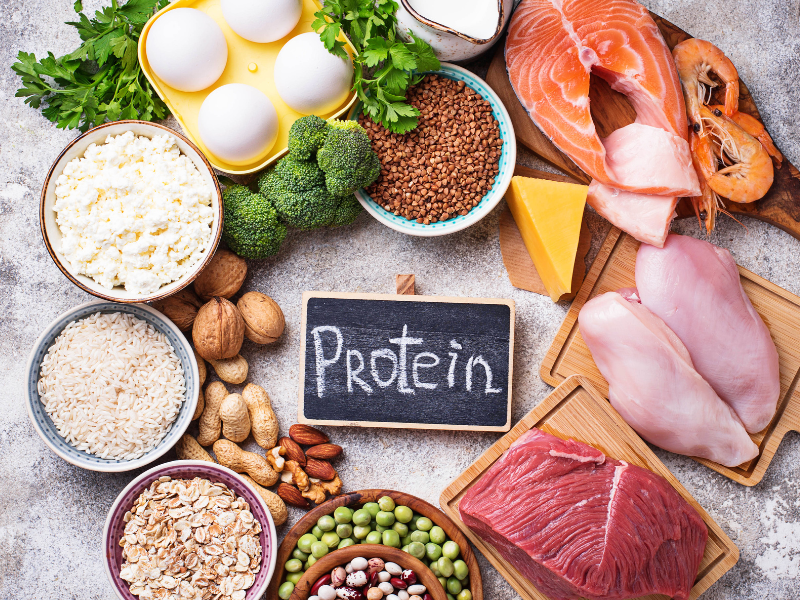


Losing body fat while gaining muscle mass might seem like a far-fetched possibility, but it definitely can be done. In this article, we’ll dive into the different approaches and strategies that can be effective in helping you transform yourself with a body recomposition plan! By combining the right nutrition, exercise routines, and workout tips from this article, you can be many steps closer to reaching your fitness goals.
Understanding Body Composition

The term body recomposition refers to how lean mass and fat are balanced in the body, which also includes organs, bones, and muscles. It doesn’t work the way general weight loss does, as it also focuses on building muscle while losing weight [1]. This will result in a stronger, even healthier physique. By balancing your body fat percentage along with muscle mass, it’ll help you achieve greater fitness goals. This requires specific workouts and diets that will support muscle growth and fat loss.
Whether you’re looking to improve muscle definition or make a major transformation, body recomposition gives you a sustainable approach to achieving long-term fitness goals. A body composition assessment can be done using dual-energy x-ray absorptiometry (DEXA) and air-displacement plethysmography [2].
Related articles:
Ultimate Body Recomposition Workout Plan for Fat Loss and Muscle Gain
What Is Shred or Shredding? A Guide to Weight Loss and Muscle Definition
How to Lose Fat
One of the primary ways to lose fat is to have a calorie deficit in your everyday diet, which refers to consuming fewer calories than how much you’re burning. For the most optimal results, you have to combine this new diet with resistance and cardiovascular exercises.
But going extreme with this strategy is also not wise as it can lead to drastic muscle loss and isn’t the most sustainable approach in the long term. What’s better is to approach these strategies with moderation when it comes to calorie intake while slowly starting things off with workout routines. A low-carb, protein-rich diet is also ideal for body fat loss.
How to Build Muscle Mass
Muscle building is an integral part of the body recomposition plan and is required to change the ratio of fat mass to lean mass. For lean body mass, a calorie-deficit diet alone will not be effective, as it will lead to muscle loss. Therefore, the right nutritional strategies need to be combined with resistance training.
Strength training helps with muscle growth, and when you consume enough protein it helps your body to repair muscle tissue and recover soon. To have the capacity to gain muscle, you need to have a calorie surplus. But of course, this poses an issue when you’re also trying to lose weight and need a caloric deficit. Hence why a high-protein diet is the way to go with weight training is your best shot at building muscle while also maintaining a healthy body mass index by losing body fat.
Check out:
How Many Calories Should I Burn a Day?
Nutrition for Body Recomposition

To successfully change your body composition—building muscle while losing fat—nutrition plays a key role [3]. Eating plenty of protein helps burn fat while preserving lean muscle. Good protein sources include skinless chicken breast, lean turkey, cottage cheese, low-fat beef, eggs, and lentils. Including these in your meals can support muscle growth and keep you feeling full longer, along with healthy fats and whole foods.
Along with protein, managing your calorie intake is just as important. To build muscle, you’ll need to eat slightly more than you burn—about 250–500 extra calories per day. For example, if a moderately active woman has a daily calorie burn of around 2,172, she should aim for about 2,422 calories to support muscle growth. A high-protein diet is necessary for promoting muscle growth and building muscle.
Training for Body Recomposition

Strength training and resistance exercises are great for building muscle and increasing strength and endurance. Weightlifting is a popular workout for this, and high-intensity interval training [HIIT] is also an effective route for losing weight. When you’re consistent with your routine and slowly progress with it, you can certainly increase muscle mass and lose fat simultaneously. Below are some training tips you can follow to curate your workout plan:
Training Tips:
- Train at least twice a week for muscle growth and fat loss.
- Increase weights gradually (no more than 10% weekly) to avoid injury, but always ensure you practice progressive overload.
- Focus on compound movements like squats, lunges, push-ups, and stair climbing.
- Maintain proper form for safety and effectiveness.
- Incorporate some cardio to support fat loss without sacrificing muscle.
More workout tips:
Physical Activity Pyramid: Your Framework for Fitness
Is It Better to Do Cardio Before or After Weights? Learn About Expert Opinions
Conclusion
We hope that this article has given you sufficient insight into body recomposition and how you can gain muscle while lowering your body fat percentage. To learn more tricks and tips on how you can improve your fitness journey, check out the JustFit app!





